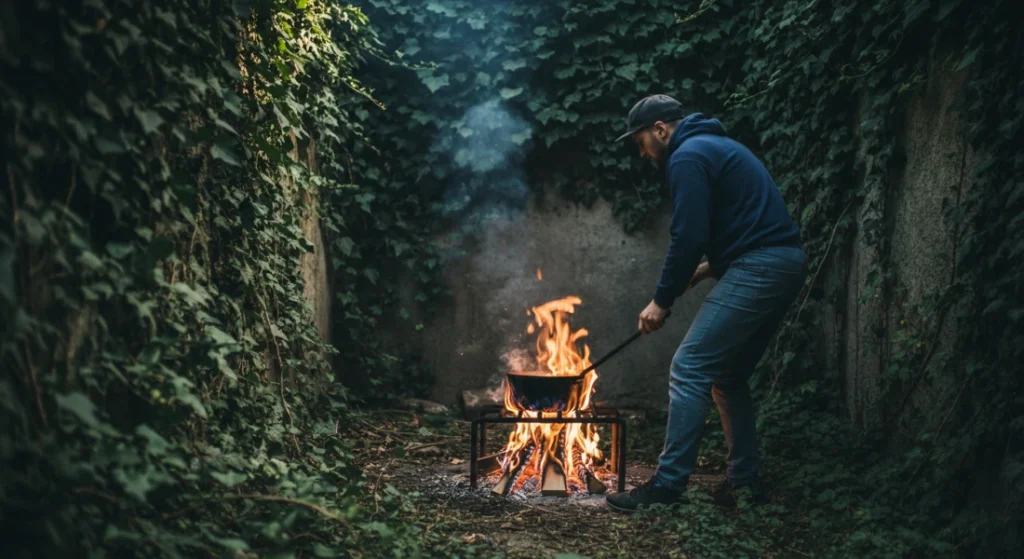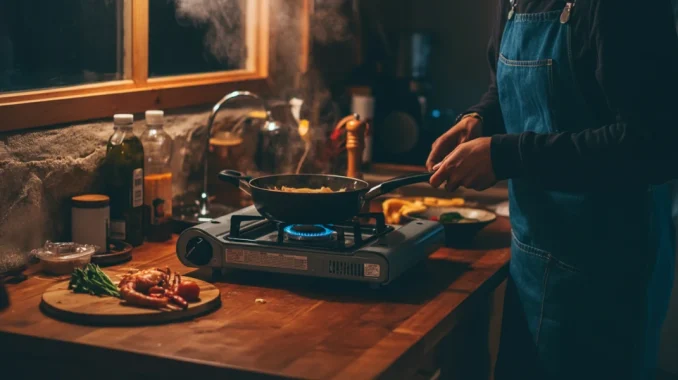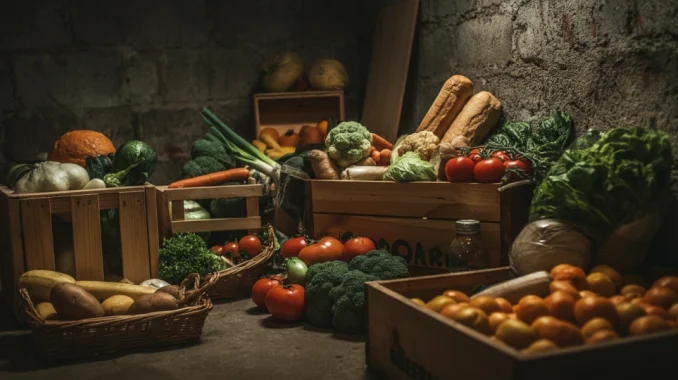In times of war, energy shortages, natural disasters, or prolonged blackouts, losing access to gas and electricity can make preparing food extremely challenging. Without a proper cooking plan, people may struggle to eat nutritious meals, leading to hunger, malnutrition, and health issues. Knowing how to cook without modern utilities is a crucial survival skill that ensures you and your family stay fed during a crisis.
This guide explores the best alternative cooking methods, essential survival strategies, what mistakes to avoid, and practical recommendations tailored for people in Europe facing war or conflict-related situations.

Step 1: Understanding Alternative Cooking Methods
There are several ways to cook food without gas or electricity. Choosing the right method depends on your location, available resources, and safety considerations. Each method has its strengths and weaknesses, so having multiple options prepared can make a significant difference in your survival.
1. Fire-Based Cooking – Traditional and Reliable
Fire-based cooking is one of the most effective ways to prepare food when modern appliances are unavailable. Whether you use an open fire, charcoal grill, or specialized stove, it provides a powerful heat source suitable for most types of cooking.
Types of Fire-Based Cooking
- Campfires & Open Fire Cooking – Cooking over an open flame is an ancient method that works well if you have access to firewood. This can be done using a makeshift fire pit or a dedicated outdoor fire ring.
- Charcoal Grills & BBQs – These provide consistent heat and are ideal for grilling, boiling water, and even baking. They are widely available and work with charcoal or wood-based fuels.
- Rocket Stoves – Small, fuel-efficient stoves designed for cooking with minimal wood or biomass. They generate high heat output while using a fraction of the fuel required by a campfire.
Best Practices for Fire-Based Cooking
- Use dry wood for efficient burning and less smoke. Wet wood produces excess smoke and burns inefficiently.
- Build a fire ring with stones to contain flames safely. This helps prevent wildfires and maintains heat concentration.
- Store extra fuel in a dry place to ensure you have access to a reliable fuel source.
- Learn how to start a fire with flint, steel, or waterproof matches in case lighters are unavailable.
- Consider using a metal grate to support pots and pans for more even cooking.
- If using charcoal, allow the coals to fully heat up before placing food on the grill to ensure even cooking and minimal smoke.
Limitations of Fire-Based Cooking
- Produces smoke, which may reveal your location in a conflict zone. Be cautious when using fire in areas where staying hidden is a priority.
- Requires proper ventilation to avoid carbon monoxide poisoning, especially if cooking indoors or in enclosed spaces.
- Firewood or charcoal may not always be available, so having a backup plan is crucial.
2. Gas-Based Stoves – Portable and Efficient
If natural gas is unavailable, propane, butane, and alcohol stoves are excellent alternatives. These stoves are compact, efficient, and easy to use, making them ideal for both emergency preparedness and everyday use.
Types of Gas-Based Stoves
- Camping Gas Stoves – Small stoves powered by propane or butane can cook meals efficiently and are easy to transport.
- Alcohol Stoves – Lightweight and powered by rubbing alcohol, denatured alcohol, or bioethanol. These stoves produce a steady flame and work well in small cooking situations.
- Gas Canister Stoves – Reliable for boiling water and cooking small meals indoors if ventilation is available.
Best Practices for Gas-Based Stoves
- Stockpile extra fuel canisters before a crisis to avoid shortages.
- Use windshields to conserve fuel and improve efficiency, especially when cooking outdoors.
- Never use gas stoves in a completely sealed room—always allow for proper ventilation to prevent carbon monoxide poisoning.
- If fuel is limited, boil water first before using it for multiple meals to maximize energy efficiency.
- Choose multi-fuel stoves that can work with different fuel types in case your primary source runs out.
Limitations of Gas-Based Stoves
- Requires fuel stockpiling, as supplies may become scarce during prolonged emergencies.
- Gas canisters run out quickly, making it essential to ration fuel usage wisely.
- Some fuels are flammable and hazardous to store, requiring special storage precautions.
3. Solar Cooking – Free and Sustainable
Solar cooking is an eco-friendly, fuel-free way to prepare meals using sunlight. While it may not be as fast or efficient as fire or gas-based methods, it provides a valuable alternative in sunny conditions.
Types of Solar Cooking
- Solar Ovens – Reflective mirrors focus the sun’s heat to cook food slowly, similar to a slow cooker.
- DIY Solar Cookers – Made from aluminum foil, cardboard, and glass, they work similarly to professional solar ovens and can be built at home.
Best Practices for Solar Cooking
- Position solar cookers towards direct sunlight for maximum heat absorption.
- Use dark pots with lids to absorb heat more effectively and speed up the cooking process.
- Plan meals that take longer to cook, such as stews and soups, since solar heating is gradual.
- Protect the solar cooker from wind, which can reduce heat retention and efficiency.
Limitations of Solar Cooking
- Only works in sunny weather, making it unreliable in cloudy or winter conditions.
- Cooking is slow, taking several hours, so it is best suited for pre-planned meals.
- Ineffective in cold or shaded environments, requiring an alternative backup method.
4. No-Cook Meals – When Cooking Isn’t an Option
If you cannot make a fire or use a stove, you can still prepare meals using non-cook foods. These options ensure you stay nourished even when cooking is impossible.
Best No-Cook Foods
- Canned foods – Beans, tuna, soups, vegetables, and meats can be eaten cold.
- Dried meals – Instant noodles, freeze-dried soups, and powdered meal replacements.
- High-energy snacks – Nuts, granola bars, peanut butter, dried fruit, and crackers.
- Rehydrated grains – Oats, couscous, or instant rice soaked in warm water.
Best Practices for No-Cook Meals
- Keep a manual can opener in your emergency kit to access canned foods.
- Store food in sealed, rodent-proof containers to prevent spoilage and contamination.
- Rotate stock every few months to prevent expiration.
Limitations of No-Cook Meals
- Provides limited variety and nutrition compared to cooked meals.
- Not as filling as hot meals, especially in cold weather when warmth is needed.
- Some foods may require clean water for preparation, making water filtration essential.
Conclusion: Be Prepared for Any Situation
Cooking without gas or electricity doesn’t have to be difficult. By learning alternative cooking methods and stocking the right supplies, you can stay fed and healthy during emergencies.
Final Recommendations
- Invest in multiple cooking methods to stay flexible.
- Stockpile shelf-stable foods that don’t require refrigeration.
- Prioritize safety when using fire, gas, or alternative fuels.
- Practice using your emergency cooking setup before disaster strikes.




